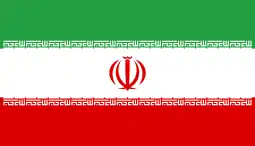Husie
Husie (Swedish pronunciation: [ˈhʉ̂ːsɪɛ])[1] was a city district (Swedish: stadsdel) in the north-east of Malmö Municipality, Sweden. On 1 July 2013, it was merged with Rosengård, forming Öster.[2] In 2012, Husie had a population of 20,769 of the municipality's 307,758.[3] The area was 2,984 hectares.[4]
Husie | |
|---|---|
Former city district | |
 Husie's neighbourhoods | |
| Country | Sweden |
| Province | Scania |
| County | Skåne County |
| Municipality | Malmö Municipality |
| Area | |
| • Total | 2,984 ha (7,374 acres) |
| Population (2012) | |
| • Total | 20,769 |
| • Density | 700/km2 (1,800/sq mi) |
| Time zone | UTC+01:00 (CET) |
| • Summer (DST) | UTC+02:00 (CEST) |

The population consists primarily of middle-income families living in single-family homes. It has been called "the green city district" due to its many recreational areas, among them Bulltofta field and Husie mosse and its proximity to the countryside. Husie is also home to the Jägersro derby track, a large stadium for horse racing that is famous for its annual derby. Husie has the highest life expectancy rate in Malmö and one of the highest in Sweden. Husie is the home to two football clubs: Kvarnby IK and Husie IF.
History
Husie was primarily built in the 1960s. Half of the population lives in villa residential areas and the other half in apartment residential areas.
Neighbourhoods
The neighbourhoods of Husie were:
Demographics
19% of the population is born abroad.
The ten largest groups of foreign-born persons in 2010 were:[5]
.svg.png.webp) Former Yugoslavia (565)
Former Yugoslavia (565) Denmark (432)
Denmark (432) Poland (423)
Poland (423) Iraq (297)
Iraq (297) Bosnia and Herzegovina (215)
Bosnia and Herzegovina (215) Iran (144)
Iran (144) Germany (99)
Germany (99) Macedonia (97)
Macedonia (97) Hungary (93)
Hungary (93) Finland (90)
Finland (90)
References
- Jöran Sahlgren; Gösta Bergman (1979). Svenska ortnamn med uttalsuppgifter (in Swedish). p. 11.
- "Nystart för ett bättre Malmö". Malmö Municipality (in Swedish). 27 June 2013. Archived from the original on 1 February 2014.
- "Befolkningsbokslut Malmö 2012" (PDF). Malmö Municipality (in Swedish). 17 June 2013. Archived from the original (PDF) on 1 February 2014.
- "Blad1 (Areal)". Malmö Municipality (in Swedish). Archived from the original on 2 February 2014. Retrieved 19 January 2014.
- "Malmöbor födda i utlandet. 1 januari 2010". Malmö Municipality (in Swedish). 1 January 2010. Archived from the original on 5 March 2012.